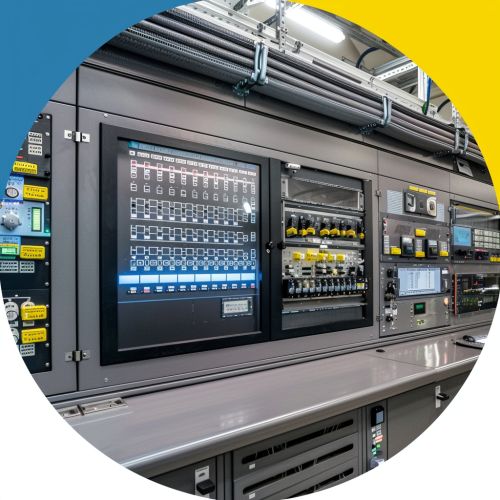@feedback systems
Introduction
Feedback systems are integral components in various fields of engineering, biology, economics, and other sciences. They are systems that use feedback to regulate their output and maintain stability. Feedback can be either positive or negative, and it plays a crucial role in the behavior and performance of systems.
Types of Feedback
Feedback systems can be broadly classified into two categories: positive feedback and negative feedback.
Positive Feedback
Positive feedback occurs when the output of a system is fed back in a manner that increases the output further. This can lead to exponential growth or runaway conditions. Positive feedback is often used in applications where amplification or oscillation is desired. For example, in electronics, positive feedback is used in oscillators to generate periodic signals.
Negative Feedback
Negative feedback occurs when the output of a system is fed back in a manner that reduces the output. This type of feedback is used to stabilize systems and improve their performance. Negative feedback is common in control systems, where it helps to maintain the desired output despite disturbances. For instance, in operational amplifiers, negative feedback is used to control gain and bandwidth.
Mathematical Modeling of Feedback Systems
Mathematical modeling is essential for analyzing and designing feedback systems. The behavior of feedback systems can be described using differential equations, transfer functions, and state-space representations.
Differential Equations
Differential equations are used to model the dynamic behavior of feedback systems. For example, the differential equation for a simple harmonic oscillator with feedback can be written as: \[ \frac{d^2x(t)}{dt^2} + 2\zeta\omega_n\frac{dx(t)}{dt} + \omega_n^2x(t) = 0 \] where \( x(t) \) is the output, \( \zeta \) is the damping ratio, and \( \omega_n \) is the natural frequency.
Transfer Functions
Transfer functions are used to represent the input-output relationship of linear time-invariant (LTI) systems in the frequency domain. The transfer function \( H(s) \) of a feedback system can be expressed as: \[ H(s) = \frac{Y(s)}{X(s)} = \frac{G(s)}{1 + G(s)H(s)} \] where \( G(s) \) is the open-loop transfer function, \( H(s) \) is the feedback transfer function, \( Y(s) \) is the output, and \( X(s) \) is the input.
State-Space Representation
State-space representation is a mathematical model that represents the system's state variables and their time evolution. The state-space equations for a feedback system can be written as: \[ \dot{x}(t) = Ax(t) + Bu(t) \] \[ y(t) = Cx(t) + Du(t) \] where \( x(t) \) is the state vector, \( u(t) \) is the input vector, \( y(t) \) is the output vector, and \( A \), \( B \), \( C \), and \( D \) are matrices that define the system dynamics.
Stability Analysis
Stability is a critical aspect of feedback systems. A system is considered stable if its output remains bounded for any bounded input. Several methods are used to analyze the stability of feedback systems.
Routh-Hurwitz Criterion
The Routh-Hurwitz criterion is a mathematical test used to determine the stability of a linear time-invariant system. It involves constructing the Routh array and checking the sign changes in the first column. If there are no sign changes, the system is stable.
Nyquist Criterion
The Nyquist criterion is a graphical method used to assess the stability of feedback systems based on their frequency response. It involves plotting the Nyquist plot and analyzing the encirclements of the critical point \(-1 + j0\).
Bode Plot
A Bode plot is a graphical representation of a system's frequency response. It consists of two plots: the magnitude plot and the phase plot. The Bode plot can be used to determine the gain margin and phase margin, which are indicators of system stability.
Applications of Feedback Systems
Feedback systems are widely used in various fields due to their ability to improve performance, stability, and robustness.
Control Systems
In control systems, feedback is used to regulate the behavior of dynamic systems. Examples include PID controllers, which use feedback to maintain the desired output in industrial processes, and autopilot systems in aircraft that use feedback to control flight parameters.
Electronics
In electronics, feedback is used in amplifiers, oscillators, and filters. Negative feedback in amplifiers helps to reduce distortion and improve linearity, while positive feedback in oscillators is used to generate stable periodic signals.
Biological Systems
Feedback mechanisms are fundamental in biological systems. For example, the human body uses feedback to maintain homeostasis. The regulation of blood glucose levels involves negative feedback, where insulin and glucagon hormones work together to stabilize glucose concentration.
Economics
In economics, feedback loops are used to model the behavior of markets and economies. Positive feedback can lead to economic bubbles, while negative feedback can stabilize markets. For example, the supply and demand model uses feedback to determine equilibrium prices.
Design Considerations
Designing feedback systems involves several considerations to ensure optimal performance and stability.
Gain and Phase Margins
Gain and phase margins are measures of how much gain or phase shift a system can tolerate before becoming unstable. These margins are used to design robust feedback systems that can withstand variations in system parameters.
Sensitivity Analysis
Sensitivity analysis involves studying how changes in system parameters affect the system's performance. It helps in identifying critical parameters and designing systems that are less sensitive to parameter variations.
Compensation Techniques
Compensation techniques are used to modify the behavior of feedback systems to achieve desired performance. Examples include lead-lag compensation, which improves transient response, and PID control, which combines proportional, integral, and derivative actions to enhance system performance.
Advanced Topics
Advanced topics in feedback systems include adaptive control, robust control, and nonlinear control.
Adaptive Control
Adaptive control involves designing feedback systems that can adjust their parameters in real-time to cope with changing conditions. This is useful in applications where system dynamics are uncertain or vary over time.
Robust Control
Robust control focuses on designing feedback systems that can maintain performance despite uncertainties and disturbances. Techniques such as H-infinity control and sliding mode control are used to achieve robustness.
Nonlinear Control
Nonlinear control deals with feedback systems that exhibit nonlinear behavior. Techniques such as feedback linearization and Lyapunov-based control are used to design and analyze nonlinear feedback systems.
Conclusion
Feedback systems are essential components in various fields, providing stability, performance, and robustness. Understanding the principles of feedback, mathematical modeling, stability analysis, and design considerations is crucial for developing effective feedback systems.


See Also
References
- Ogata, K. (2010). Modern Control Engineering. Prentice Hall.
- Dorf, R. C., & Bishop, R. H. (2011). Modern Control Systems. Pearson.
- Kuo, B. C. (2005). Automatic Control Systems. Wiley.
